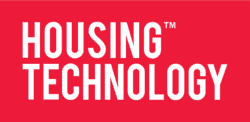To say that ‘more for less’ has become something of a buzzword over the last few years would be a huge understatement, with public and private sector organisations under pressure to deliver better customer satisfaction for tenants while also keeping costs down. Housing providers’ IT teams have become fixated on this issue, aiming to bring added-value and cost-effective solutions to the table. This drive for value was also the key theme of Housing Technology’s February 2011 conference.
The way in which IT and technology are implemented and viewed by housing providers is very different to five years ago and one of the biggest trends we see is the move towards virtualisation and workforce mobilisation.
Virtual desktop infrastructure (VDI), where desktops are hosted within a virtual machine on a central server, is one of the biggest technology trends affecting housing providers at the moment and will become even more prevalent as they try to get the most out of their staff and streamline their services. They need a system that lets them adopt flexible working practices and accommodate budget cuts while improving services to tenants.
Business benefits
JMC presented its insights into the future of IT at two regional forums for housing providers earlier this year, with VDI highlighted as having the most business benefits for organisations as they try to streamline their operations. But what is VDI and what does the technology do? This might be best explained via a real-life example.
Case study: A housing provider’s network is failing. Staff are struggling to access data from separate network locations within the group and to communicate internally easily. The housing provider operates over multiple sites, with around 800 staff who all need access to centralised applications and data. So how does VDI address this and why is it a better option than other solutions?
Installing a VDI platform gives housing providers huge flexibility. It centralises an organisation’s desktops, in the same way as many have centralised servers, which reduces costs while allowing every user on the network to have a unique and customised ‘virtual’ environment – without affecting others. Unlike traditional thin-client solutions, this means that users in some departments can be allowed to install particular applications to their desktops and change their settings without affecting other users. In the past some applications, such as streaming media, video and CAD tools were not thin-client friendly and didn’t lend themselves to centralised deployment. Within a VDI framework, users can be given applications as needed, whether individually or in groups, via a dedicated virtual desktop, avoiding this problem altogether.
Setting the workforce free
With many housing providers operating over multiple sites and the need for maximum efficiency from staff (there’s that ‘more for less’ again), flexible and mobile working is not only valuable to the business, but is also perceived as an employee benefit.
VDI is a very cost-effective way of facilitating this. Staff can access their own personalised desktop from wherever they happen to be and by integrating the latest in ‘presence’ technology, it also enables their location to be known (as you can see where they are connected). This makes the working lives of staff members more efficient and less stressful, whether they are carrying out repairs from various locations or housing officers at different sites. What makes VDI suitable for this is that it allows remote access to the core network from any location in a fully-secure environment.
Organisations that have implemented VDI now have a new resilient network that is cheaper to administer and easier for staff to use. Staff members can work from different office locations as well as from mobile sites – using laptops, smartphones and even iPads – while still accessing the core network through their own customised virtual desktop. The housing provider has full control over which users can access which applications and can find out where their staff are at all times. And they have no worries about security. The new network also permits other data services to be run over it, such as the housing provider’s own TV channel and information services to tenants.
Putting tenants first
Each housing provider’s VDI and IT setup is individual to their needs, making sure no money is wasted. VDI reduces travel costs for staff, enables better communication between sites and can provide connectivity to tenants at no extra cost. The money saved can be spent on providing added-value services to tenants. This is what all IT directors are looking for – greater value for money, access to information and more efficient and streamlined operations. IT is now all about putting technology into people’s hands, providing opportunities and breaking down organisational barriers. In short, innovation as an enabler and delivering ‘more for less’.
Mark Summers is head of technology sales for JMC IT.

